Papers by Olumayowa A Idowu
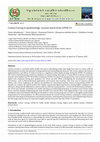
Magna Scientia Advanced Research and Reviews, 2022
Contact tracing is a powerful public health tool used in identifying people that might have been ... more Contact tracing is a powerful public health tool used in identifying people that might have been in contact with an infected person to assess the potential of being infected and transmitting the diseases. This review explores the history, implementation, and effects of contact tracing, as a significant public health strategy during the COVID-19 pandemic. The review started by giving a historical summary of contact tracing, then links it to early efforts at disease control for diseases such smallpox and TB. We further examine pre-COVID-19 contact tracing approaches, such as manual and early digital tools employed during past epidemics like Ebola and Zika. While investigating the development of digital innovations—such as Bluetooth-based applications and location data tracking—that were used to improve tracing efforts—the review emphasises the efficacy and problems of conventional manual contact tracing during COVID-19. Notably, we examine the hybrid models that combine manual and digital approaches, proving higher compliance and efficiency. Along with the difficulties countries with less efficient tracing systems—such as the United States and India—the review also includes worldwide case studies showing successful implementations in countries such Taiwan, South Korea, and New Zealand. Emphasising the need of public trust and the effect of the digital divide, it also covers public compliance and social elements affecting involvement in contact tracing programs. In order to strengthen public health preparedness for next pandemics, we offer potential options for contact tracing resilience, arguing for contact systems backed by technological developments and ethical protections. Informing best practices for next epidemiological tactics, this thorough analysis uncovers important insights and lessons learnt from the COVID-19 pandemic.
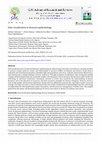
GSC Advanced Research and Reviews, 2021
Data visualization has transformed diseases epidemiology by empowering researchers, practitioners... more Data visualization has transformed diseases epidemiology by empowering researchers, practitioners, and policymakers to unleash complex patterns, trends, and relationships. It uncovers hidden correlations and clusters, tracks disease outbreaks and transmission dynamics, identifies high-risk populations and areas, evaluates intervention effectiveness, and communicates complex findings to diverse audiences. Through exemplary visualizations, data visualization distills complex epidemiological data into actionable insights, informing data-driven decisions that promote public health and well-being. As advanced visualization techniques continue to evolve, they accelerate the understanding of disease dynamics, aid in the allocation of resources, and drive proactive strategies for disease mitigation. However, barriers such as data quality, infrastructure limitations, and the need for skilled personnel persist, especially in under-resourced settings. This paper presents a critical evaluation of the role of data visualization in epidemiological practice, discussing its implications for risk identification, policy formulation, and the proactive management of health crises. The insights gained from this paper will illuminate pathways for future innovations in disease surveillance and control.
World Journal of Advanced Research and Reviews, 2024
Over the past few years there has been immense evolution in various areas particularly in the are... more Over the past few years there has been immense evolution in various areas particularly in the areas of digital technologies wherein the pace of change is very high. Industrial areas such as operations and supply chain management together with advanced technologies such as machine learning, big data analytics, artificial intelligence, as well as the Internet of Things, create completely different forms of operational models for various industries. In the area of healthcare too, these emerging computational sophistication is introduced to revolutionize the approaches to prevent, diagnose and treat diverse diseases and illnesses.
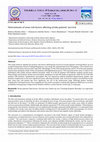
International Journal of Science and Research Archive, 2024
This study aimed to identify the primary risk factors affecting the survival of stroke patients r... more This study aimed to identify the primary risk factors affecting the survival of stroke patients receiving follow-up care using the University of Ilorin Teaching Hospital as a case study. We analyzed data from 390 patients, 120 of whom were female, and 270 males, between 2021 and 2022. Shockingly, 27.5% of the female patients and 57.7% of the male patients passed away during the study. Of the 225 patients with high blood pressure, 72% experienced the event. A total of 162 individuals with cardiac disease suffered mortality, while 33 of the 85 patients with diabetes mellitus passed away. Hemorrhagic and ischemic strokes were prevalent, resulting in 45 and 102 deaths, respectively, while 96 out of the 204 patients with baseline complications succumbed. The Cox regression analysis identified hypertension, gender, and baseline complication as the most significant factors affecting mortality rates. Univariate analysis revealed that stroke type, drug type, and patient age were significant, but not at the multivariate stage. Although gender, baseline complication, and hypertension were insignificant, the results revealed no statistically significant difference in survival probability among groups categorized by diabetes mellitus, cardiac disease, stroke type, or drug type.
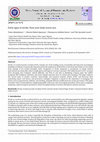
World Journal of Advanced Research and Reviews, 2019
Stroke, or cerebrovascular accident (CVA), remains one of the leading causes of mortality and lon... more Stroke, or cerebrovascular accident (CVA), remains one of the leading causes of mortality and long-term neurological disability worldwide. It is generally characterized by the sudden loss of blood flow to the brain and results in irreversible brain damage if not treated promptly. Early recognition of stroke symptoms is paramount, as timely medical intervention can drastically reduce complications and improve recovery outcomes. The widely known F.A.S.T. acronym (Face drooping, Arm weakness, Speech difficulty, and Time to act) aids in identifying common signs, but subtler symptoms like numbness, dizziness, and vision changes may also serve as critical early warnings. This paper explores the various types of strokes—ischemic, hemorrhagic, and transient ischemic attacks (TIA)—and discusses their underlying causes, risk factors, and prevention strategies. Emphasis is placed on the importance of managing risk factors such as hypertension, diabetes, and smoking, alongside lifestyle modifications for stroke prevention. This paper concludes with recommendations emphasizing public awareness and encouraging immediate action upon recognizing symptoms, underscoring the potential to reduce the global burden of strokes and improve patient outcomes.
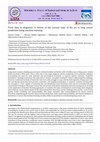
International Journal of Science and Research Archive, 2022
Lung cancer remains a leading cause of cancer-related mortality worldwide, with 1.8 million cases... more Lung cancer remains a leading cause of cancer-related mortality worldwide, with 1.8 million cases of lung cancer-related death recorded in 2022 alone. This is often due to late-stage diagnosis and the complexity of its molecular subtypes, necessitating the need for early detection and personalized treatment, to improve patient outcomes. Predictive biomarkers—biological indicators that help detect, monitor, and guide treatment—help in addressing this challenge. However, traditional methods of biomarker discovery often struggle to cope with the heterogeneity of lung cancer and the vast datasets generated from genomic, proteomic, and imaging technologies. In response, machine learning (ML) has emerged as a tool, capable of analyzing data and identifying novel biomarkers that may be overlooked through conventional techniques. This paper reviews the current state of predictive biomarker discovery in lung cancer, focusing on the application of machine learning approaches. It examines the types of biomarkers used in lung cancer diagnosis and treatment, recent advancements in ML-driven biomarker discovery, and the challenges that persist—such as data quality, model overfitting, and interpretability. This paper concludes with recommendations for future research directions, emphasizing the need for improved data integration, better model interpretability, and clinical validation of biomarkers to ensure that machine learning can fully realize its potential in revolutionizing lung cancer care.








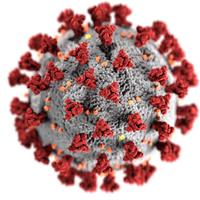

Uploads
Papers by Olumayowa A Idowu